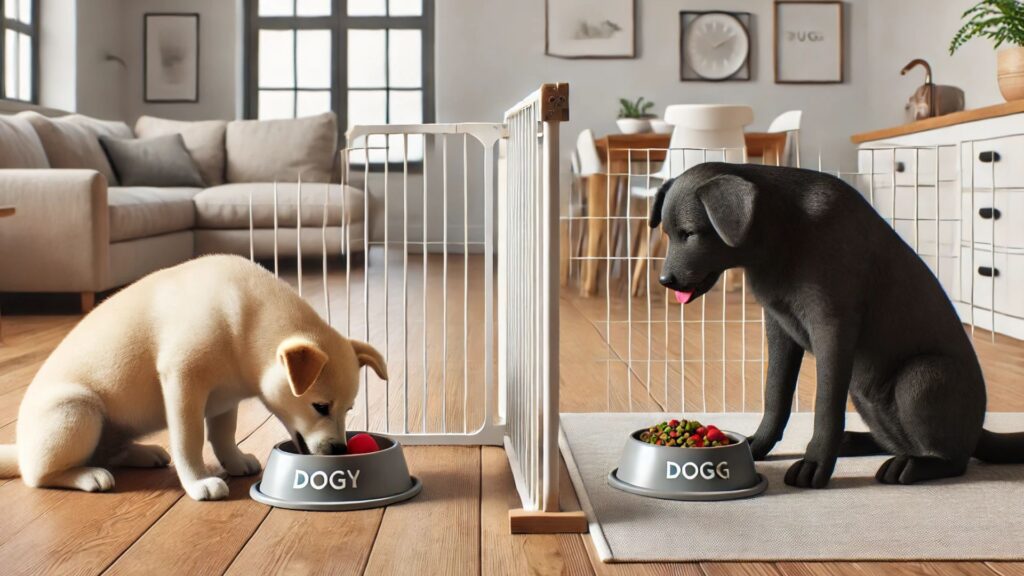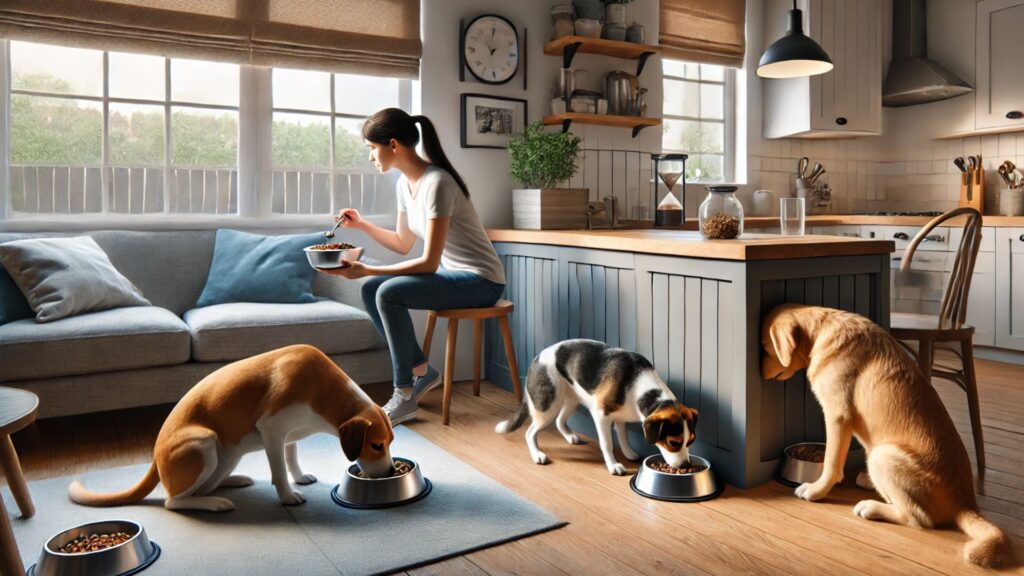Food aggression in dogs is a common issue that can create tension and conflict within multi-dog households. This behavior, also known as resource guarding, occurs when a dog becomes defensive or aggressive when eating or when food is present. Addressing food aggression is crucial for maintaining harmony and ensuring the safety of all pets and family members.
In this guide, we will explore five effective ways to manage and mitigate food aggression in dogs, providing practical solutions to foster a peaceful mealtime environment.
Why is it Important to Address Food Aggression?
Food aggression not only creates a stressful environment but can also lead to physical altercations and injuries among dogs. It can exacerbate existing behavioral issues and disrupt the overall well-being of pets.
Moreover, aggressive behavior can extend beyond meal times, potentially escalating into other forms of aggression if not addressed promptly. Ensuring that your dogs feel secure and unthreatened while eating helps build trust and promotes positive interactions.

Techniques to Prevent Dog Food Guarding Behavior
1. Separate Feeding Areas
One of the most straightforward methods to prevent food aggression is to feed dogs in separate areas. This reduces the perceived competition for food and allows each dog to eat in peace.
Different Rooms or Crates:
Placing each dog in a different room or crate during mealtimes can effectively reduce aggressive encounters. By ensuring that dogs are not in each other’s line of sight, you can minimize the stress and competition that often triggers food aggression. If space is limited, using baby gates or barriers to create distinct feeding zones within the same room can also be beneficial.
Routine and Consistency:
Feeding the dogs in the same spot and at the same time every day helps create a predictable environment, reducing anxiety around mealtime. This consistency reassures the dogs that food will be regularly available, lowering the need to guard it aggressively.
2. Establish a Feeding Routine
Consistency and predictability in feeding times can alleviate anxiety related to food scarcity.
Scheduled Feeding:
Regularly scheduled feeding times help dogs understand that food is available at consistent intervals, reducing their impulse to guard it fiercely. This routine helps in creating a sense of security and trust in the feeding process.
Pre-Meal Exercise:
Engaging your dogs in physical activity before meals can help in reducing their energy levels and stress. This practice mimics the natural cycle of hunting and eating, making dogs more relaxed and less likely to exhibit aggressive behavior during feeding times. Exercising your dogs can also help to burn off excess energy that might otherwise be directed towards aggressive behavior.
3. Desensitization and Counter-Conditioning
Gradual desensitization and counter-conditioning are effective techniques for changing your dog’s emotional response to food presence and competition.
Proximity Training:
Start by standing a few feet away while your dog eats. Gradually decrease the distance over multiple sessions, rewarding calm behavior with treats. This process helps the dog become accustomed to your presence without feeling threatened.
Positive Reinforcement:
Incorporate positive interactions by adding treats to your dog’s bowl while they are eating, reinforcing the idea that your presence is not a threat but a positive addition to their mealtime experience. This method helps in building a positive association between your presence and their food, reducing aggressive tendencies over time.

4. Hand Feeding
Hand feeding can help build trust between you and your dog and reduce food aggression.
Hand Feed Meals:
Regularly hand feed your dog, especially when they are young. This practice helps them associate your hand with positive experiences and not a threat to their food. Hand feeding can be particularly effective with puppies, teaching them early on that human presence during mealtime is safe and beneficial.
Intermittent Treats:
Occasionally offering treats by hand during meals can further reinforce trust. This method not only builds a strong bond between you and your dog but also helps in making the dog more comfortable and less defensive about their food.
5. Training and Commands
Teaching your dog basic commands and reinforcing good behavior can manage food aggression effectively.
Sit and Wait:
Training your dog to sit and wait before being allowed to eat establishes control and patience. This practice helps the dog understand that you are the provider of their food and that they need to follow commands to get it, reducing their impulse to guard it aggressively.
Leave It Command:
The “leave it” command can be useful to prevent your dog from reacting aggressively if another dog approaches during mealtime. Teaching this command involves rewarding the dog for not reacting to food or other items, helping them learn to stay calm and controlled in the presence of food.
FAQs
Can food aggression be completely cured?
While food aggression can be significantly managed and reduced, complete eradication depends on the dog’s individual temperament and the consistency of training.
Is food aggression common in all breeds?
Food aggression can occur in any breed, although some dogs with a history of resource scarcity or certain genetic predispositions may be more prone to it.
Should I seek professional help?
If your dog’s food aggression is severe or if you feel unsafe managing it, consulting a professional dog trainer or behaviorist is recommended.
Conclusion
Addressing food aggression in dogs requires patience, consistency, and a positive approach. By implementing these five strategies—separate feeding areas, establishing a feeding routine, desensitization, hand feeding, and training commands—you can create a safer and more harmonious environment for your pets.
Remember, the goal is to build trust and reduce anxiety around food, fostering a peaceful coexistence among all dogs in your household.


